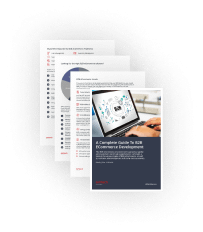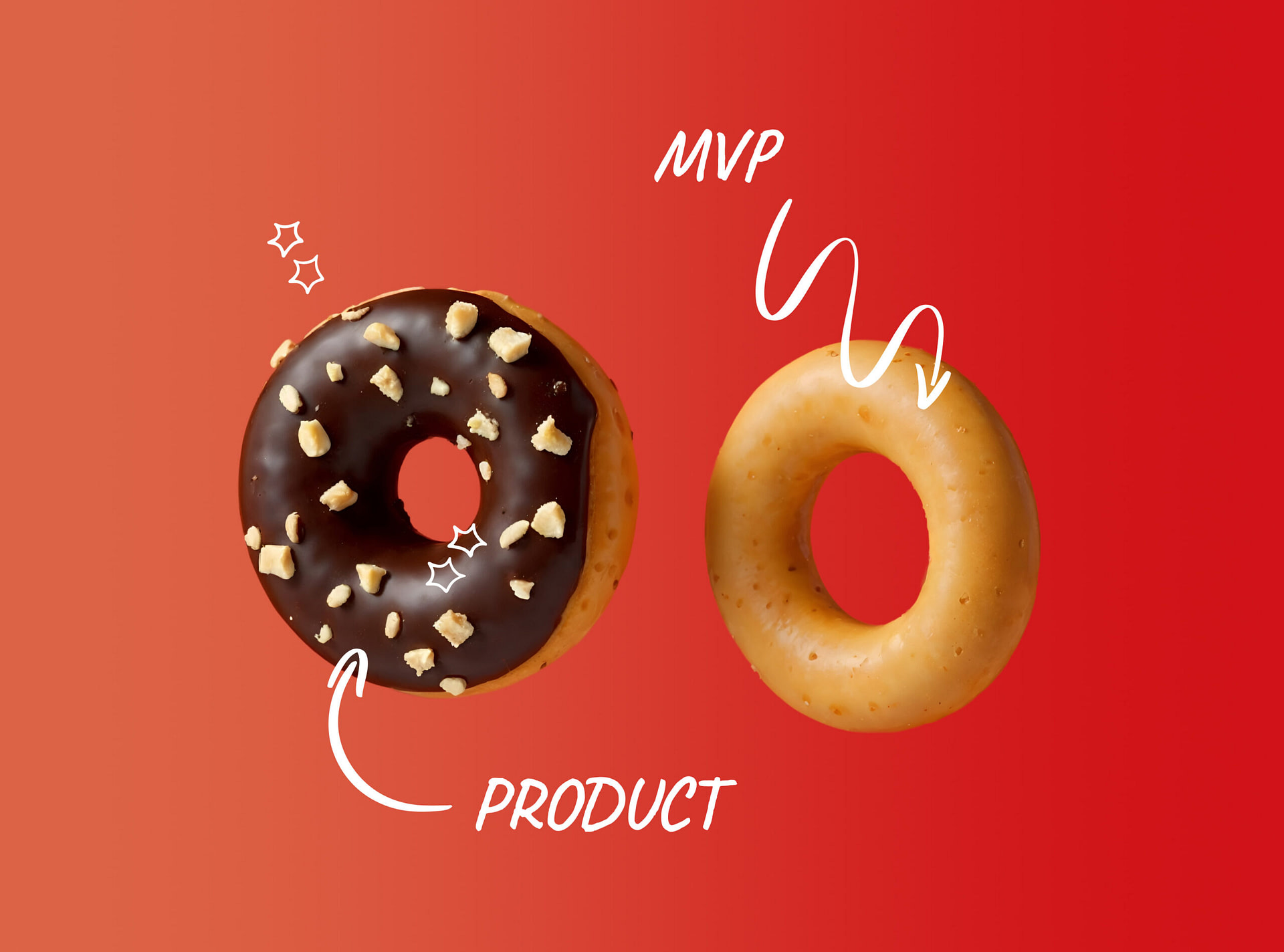The startup ecosystem has become as competitive as never before. This is where the Minimum Viable Product (MVP) turns into a crucial milestone for entrepreneurs eager to raise funds.
The MVP separates successful ventures from the ones that fail to launch. An MVP for investors is more than a prototype—it’s a validation tool that proves your product’s market potential. It is essentially a basic version of your product that lets you test your concept in the real world. You get a chance to collect feedback and make adjustments before scaling.
As soon as it is time to raise funds, effectively pitching your MVP can make all the difference. A strong MVP pitch demonstrates the potential of your product. Besides, it shows investors why it’s worth investing in. Mastering how to pitch MVP ideas persuasively is often the difference between securing funding and being overlooked.
However, many entrepreneurs overlook the importance of crafting a compelling MVP presentation. A generic or poorly executed pitch will likely fail to capture investor interest.
Whether you’re seeking MVP funding or exploring growth strategies, knowing how to position and present your MVP is essential. This is what we are going to discuss in this article.
Let’s dig in!
How to Position Your MVP for the Next Investment Round
As mentioned earlier, successfully MVP pitching means demonstrating its potential for growth. But how do you transition from a basic version of your product to a scaling powerhouse?
Investors want to see that your MVP is more than just a functional prototype. They want to understand how it will grow, evolve, and thrive in the market.
Start by presenting a working MVP that showcases its core features and its ability to solve a real problem. Don’t just talk about the product; focus on the scalability and growth potential. How can your MVP expand in terms of features, user base, or market reach?
Create a clear roadmap outlining how you plan to enhance the MVP over time. This includes gathering user feedback, iterating the product based on insights, and refining the user experience. Investors will appreciate a well-thought-out MVP planning strategy that demonstrates foresight.
For example, if you’re developing a SaaS product, show how the MVP can be scaled with additional features like integrations or premium offerings that can drive customer retention and revenue.
A great idea is to create an MVP diagram that highlights key milestones and growth projections.
The following tips will let you keep your presentation attractive for investors:
Focus on Product-Market Fit
Ensure your MVP solves a clear problem for a specific target audience. Investors want to see that there’s demand for your solution and that your product fits well in the market.
Show How Your MVP Can Scale
Demonstrate your MVP’s potential for growth. Investors are looking for products that can scale efficiently. Present a roadmap for how your MVP can be enhanced over time, whether through new features, user acquisition strategies, or geographical expansion.
Highlight Traction and Early Success
Share early successes and metrics, like customer feedback, engagement rates, or initial revenue. If you’ve already gained traction, this validates the product’s viability and appeal to your target market.
Emphasize Learnings and Iterations
Show how you’ve used feedback to refine and improve the MVP. Investors will appreciate your willingness to learn and adapt, proving that you’re not just building a product—you’re building something that can evolve based on real-world insights.
Present a Clear Go-to-Market Strategy
Outline how you plan to acquire users, enter the market, and grow your customer base. Investors need to know that you have a clear path to reach your target audience and sustain long-term growth.
Use Data to Back Up Your Claims
Include any available metrics that demonstrate your MVP’s potential. Whether it’s user engagement, customer retention, or conversion rates, data will help build investor confidence in your product’s success.
What Investors Expect from an MVP at Later Stages
As you approach later stages of funding, investors will expect you to have data-driven insights into the product’s market fit. At this point, you need more than just an MVP—you need key performance indicators (KPIs) and metrics that validate your assumptions. A strong MVP for funding should be backed by real user insights, early traction, and a clear plan for scaling. Implementing a revenue enablement approach helps ensure your team is aligned around the KPIs investors care about most.

Some of the key indicators investors look for include:
- Customer Acquisition Cost (CAC): how much are you spending to acquire a customer, and is it decreasing over time as you optimize your marketing and sales channels?
- Customer Lifetime Value (CLTV): what is the total revenue a customer will generate for your business over their lifetime? A high CLTV can justify higher CAC, making this a critical metric.
- Monthly Recurring Revenue (MRR): if your business model is subscription-based, investors want to see consistent and predictable revenue growth.
- Retention and Churn Rates: high retention and low churn signal that your product is solving a problem and providing value.
For instance, let’s say your MVP is a fitness app. Investors will want to see how many users have upgraded from free to paid plans, how often they’re using the app, and whether these metrics align with your projections.
These metrics are critical because investors feel confidence and see that your MVP is not just an experiment. Instead, it’s a viable, scalable business. Clear metrics reduce the perceived risk of investment in MVPs, making your business a more attractive opportunity.
Key Elements of an MVP Pitch Deck for Scaling Businesses
When crafting your MVP pitch deck, the presentation is just as important as the product itself. Using Prezent’s software for board presentations in your MVP pitch process ensures your content is structured and growth-focused. It should focus on key components that investors care about.
Essential components of an MVP pitch deck include:
- Define the problem your MVP is solving and explain why it matters.
- Demonstrate your product’s core functionality and how it addresses the problem effectively.
- Show the size of the market, potential growth, and your target audience.
- Explain how you plan to attract customers and grow your user base. This can include marketing channels, partnerships, and sales strategies.
- Present your revenue model, financial projections, and key metrics like CAC and CLTV.
Also, make sure you avoid these common mistakes when crafting an MVP deck.
1. Overloading the Deck with Technical Details
Your MVP may have intricate technical aspects that you’re proud of. However, investors do not care about the technical side of your technology. They care more about how your product will solve a real-world problem and how it will generate revenue.
When you dive too deeply into technical specifications, you risk losing the attention of your audience and detracting from the bigger picture: the business opportunity.
Investors are generally more concerned with the market potential, scalability, and the team’s ability to execute. Do not spend too much time explaining how your MVP works on a technical level.
Overloading the pitch with technical details may overwhelm investors and distract them from your product’s true value. Remember, they’re looking for a solid investment with a clear market fit, not a deep dive into the code or architecture of the product.
2. Focusing Too Much on the Product’s Features Instead of Its Market Potential
When pitching an MVP, it’s easy to get caught up in listing all the features your product has. After all, you’ve worked hard to develop them.
However, investors aren’t buying features. They’re buying the potential for growth. They want to see how your product solves a specific problem, what the market opportunity looks like, and how you plan to scale.
For example, saying your app has “real-time chat,” “push notifications,” or “advanced search filters” doesn’t tell investors why customers will choose your solution over others.
Investors are ultimately concerned with market potential and profitability. They want to know how your MVP fits into the larger landscape and how it can grow and generate revenue. Focus on what makes your product valuable to the customer and how that translates to business growth.
3. Using Vague Language Without Supporting Data or Metrics
A common mistake in many MVP pitches is using vague language or making broad claims without backing them up with data or metrics. Phrases like “This product will change the industry” or “We have huge market potential” don’t carry weight without numbers to substantiate them.
Investors rely heavily on data because it gives them insight into the real-world performance of your MVP. They want to see metrics like customer acquisition costs (CAC), retention rates, engagement metrics, or early sales figures.
Vague language without data creates doubt. Investors want to see that your MVP has traction or at least valid data that proves your concept is viable. It is better to present hard numbers and clear metrics. It lets you build trust and credibility, which ultimately helps convince investors that your MVP is worth the investment.
Using Data and Metrics to Strengthen Your MVP Pitch
Data speaks volumes. Investors are often skeptical about the viability of an MVP. However, when there is solid data and metrics to back it up, they gain trust in your product.
Highlighting financial and business metrics in your pitch shows that you’re not only passionate about your product but also knowledgeable about what drives business success.
Key metrics to include are:
- Burn rate: the speed at which you’re spending capital. This will indicate how long your funds will last and when you need to raise more capital.
- Gross margin: investors will look for a solid gross margin as a sign of profitability.
- User engagement: demonstrate how actively users are engaging with your MVP and the potential for further user growth.
Let’s say, you’re working in a market where trading and investment are key. Here, you need to consider how professionals use leverage to amplify their returns in real-market trading.
Just like leverage, your business model should show investors and 409A valuation providers ways to achieve more with their investment. It makes each dollar work harder as you scale.
How to Tailor Your MVP Pitch for Different Investors
Not all funders are the same. Tailoring your MVP pitch is critical depending on the type of investor you’re targeting.

These are common investors’ types you need to primarily focus on:
- Venture capitalists (VCs): VCs are looking for rapid growth and high returns. Your pitch should focus on scalability, a large addressable market, and the potential for long-term profitability.
- Angel investors: often more willing to take risks, angel investors typically want to see a compelling story and a clear path to growth. They may also want to know how their experience or network can help your startup.
- Strategic partners: these investors are interested in how your product aligns with their existing business or goals. Focus on how the partnership could create mutual value and why your MVP is a good fit for them.
How to Handle Investor Questions and Due Diligence
A successful MVP presentation is only half of the deal. After you’ve pitched your MVP, be prepared for tough questions. Investors will want to know everything from your financial history to your team’s capabilities. Just make sure you are ready to answer.
Common investor questions include:
- What problem are you solving, and why is it urgent?
- How do you plan to scale the product?
- What are your customer acquisition strategies?
- How much funding do you need, and how will you use it?
A solid understanding of your financials, market size, and the long-term roadmap is crucial.
For example, if your MVP is a marketplace, be ready to discuss how you’ll handle relations between vendors, ensure safe and reliable payment and delivery methods, or grow your customer base with integrated promotion tools.
Common Mistakes in Raising Funds for a Scaling MVP
Raising funds may seem tough. What’s more, it is quite easy to make mistakes that could cost you valuable opportunities. They generally include:
1. Underestimating the competition
Investors will expect you to understand the competitive landscape. Not acknowledging competitors or overestimating your market share can hurt your credibility.
How to overcome it:
- Do thorough market research: before pitching, conduct a comprehensive analysis of your competitors. Know who they are, their strengths, weaknesses, and what differentiates your product.
- Acknowledge the competition: instead of pretending they don’t exist, highlight how your MVP addresses gaps or offers superior features. Acknowledge the competition but emphasize your unique selling proposition (USP).
- Position your MVP clearly: make it clear why your product is better, or how it fills a gap in the market that others haven’t addressed. Show where you fit in the competitive landscape and explain why your solution will outperform or offer something new.
2. Failing to show traction
Without solid metrics or user feedback, your MVP will appear unproven. Show that people want your product before asking for funding.
How to overcome it:
- Focus on key metrics: investors care about data. If you have users, show user engagement metrics, such as active users, retention rates, or growth in your user base. Even if you’re in the early stages, metrics like landing page conversion rates, email sign-ups, or interest from early adopters are valuable.
- Collect and present customer feedback: show that real customers are using your MVP and providing feedback. Include testimonials, user surveys, or case studies that demonstrate the problem-solving capabilities of your product.
- Launch pilot programs or beta testing: if you’re still early in development, offer pilot programs or beta testing results that show users are engaging with the product. Even a small group of enthusiastic users can make a big impact.
3. Overpromising and underdelivering
Be realistic about your growth projections and avoid painting an overly optimistic picture of success.
How to overcome it:
- Set realistic expectations: be honest about what your MVP has achieved and what still needs to be done. Show your potential for growth but base your projections on realistic assumptions backed by data.
- Back projections with data: use data from the MVP—such as early user acquisition costs, user engagement rates, and conversion rates—to back up your growth projections. Rather than claiming massive market share, show how you plan to grow steadily.
- Highlight achievable milestones: rather than making grandiose claims, focus on achievable milestones. This could include milestones such as reaching a certain user count, hitting specific revenue targets, or securing a strategic partnership.
How to Follow Up After Your MVP Pitch and Secure Funding

The pitch is just the beginning. Follow-up is essential to keep the momentum going. After your MVP fundraising pitch, make sure to:
- Send a thank-you email summarizing the key points discussed.
- Provide additional data or documents if requested.
- Keep investors updated on your progress and milestones.
Timely communication and updates after your pitch can significantly increase your chances of securing MVP funding. Building a relationship with investors is crucial for long-term success. Investors want to know that you’re committed to growing your business, and effective communication is key to securing the next round of funding.
Key Takeaways for a Strong MVP Pitch
To sum up, pitching your MVP is about showcasing not just the product, but its potential to grow, scale, and provide value.
- Tailor your pitch to different types of investors and focus on their specific needs.
- Demonstrate scalability by showing a clear roadmap and a sustainable business model.
- Avoid common mistakes, such as neglecting to acknowledge competition or failing to follow up after the pitch.
A strong MVP pitch is your gateway to the future success of your business. Especially when it comes to MVP funding for startups, clarity, traction, and a growth roadmap are non-negotiables. Craft it carefully, and you’ll be well on your way to securing the funding you need for growth.

